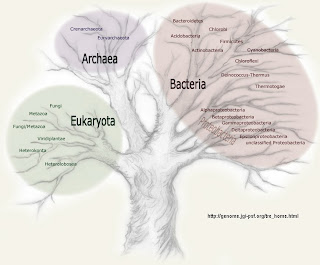 John Wise is a Professor of Biology at Southern Methodist University in Dallas, Texas (USA). He writes on the campus website [Intelligent Design is not science: why this matters].
John Wise is a Professor of Biology at Southern Methodist University in Dallas, Texas (USA). He writes on the campus website [Intelligent Design is not science: why this matters].Because science gives us methods to accurately understand and manipulate the world we live in. Few people would dispute that our present scientific understanding of the physical world has led to a tremendously long list of advances in medicine, technology, engineering, the structure of the universe and the atom, and on and on. The list is nearly endless, but it does not include everything. Science can tell us only what is governed by natural forces. Miracles are extra-ordinary events; gods are super-natural beings.Okay, let's examine that argument. Science deals with the natural world, that's fair enough. Religion deals with the supernatural world so it's outside of science. That's also a fair statement. The question is, is there such a thing as a "supernatural world" and how can we learn anything about it?
Are there reasonable philosophical arguments that can be made for the existence of God? Certainly. Are there reasonable philosophical arguments that can be made that God does not exist? Yes. Is there scientific evidence that answers either of these great questions one way or another? None that holds up to close scrutiny. Collins has no more scientific evidence that God exists than Dawkins has that God does not. Their evidence is philosophical, not scientific. Philosophy can encompass these issues, science cannot.
We can deal with the natural world and we can at least imagine that there's a supernatural world beyond the reach of science. But there's a whole lot of middle ground that's being excluded here. Any religious claim that impinges on the natural world is subject to scientific analysis. That includes claims of miracles.
The only kind of religion that can be completely outside of science is one that believes in a God who never meddles in human affairs. Because as soon as that meddling occurs—answering prayers, for example—we scientists can legitimately ask whether the meddling is detectable or not.
Miracles either exist or they don't. If they do then we should have evidence for miracles. If there's no evidence then you should not believe in them. If you believe in miracles in the absence of evidence for their existence, then your belief is in conflict with science.
Professor Wise says that science can't prove the non-existence of God. That's true. In fact, we can't prove the non-existence of many things. We can't prove, for example, that astrology is completely false in every single case. What we can do is to limit its probability to such a small number that it makes no sense to believe in astrology. That's the power of science.
Professor Wise goes on to describe Professor Behe's testimony at the Dover trial in 2005.
Listen further to the transcripts of these hearings - they are astounding. Professor Behe, star witness for the ID proponents and Discovery Institute senior fellow, gave a Discovery Institute-approved definition of scientific theory in his testimony. Unfortunately for both Dr. Behe and the Discovery Institute, Eric Rothschild, the brilliant lawyer for the parents, asked Dr. Behe, "But you are clear, under your definition, the definition that sweeps in Intelligent Design, astrology is also a scientific theory, correct?" And Dr. Behe answered, "Yes, that's correct."Of course we don't want such a science. We want a science that rejects astrology because there's no evidence for it. We don't want astrologers to try and escape scientific scrutiny by claiming that astrology is outside of science, do we? We don't want astrologers to claim that their horoscopes are "miracles" and therefore just as legitimate as science.
Is this what America wants and needs? A definition of science that is so weak and neutered that astrology qualifies?
Why is it that we feel very comfortable rejecting the ridiculous claims of astrology but we have to make special excuses to protect religion from close scientific scrutiny?
[Hat Tip: The Panda's Thumb]










































